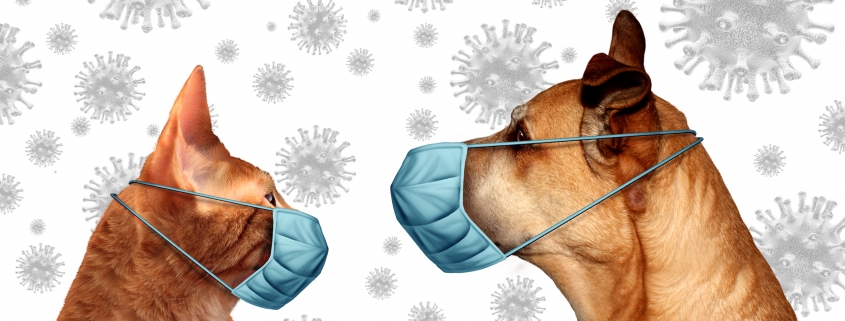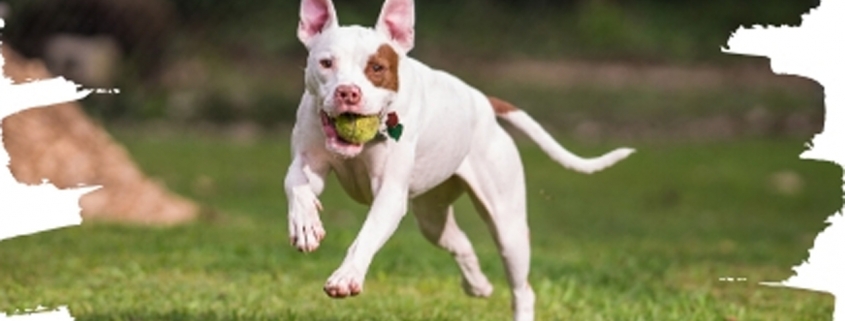BY JESSICA PAIRRETT, COPY EDITOR
Who among us doesn’t think our precious pups are smart? Well, okay, maybe not all of us do. While our dogs are smart in their own ways, not every pooch out there is born to earn an A on every task he or she is asked to do. But some dogs are simply smarter, right?
There’s no cut-and-dry answer to that. In looking at a dog’s intellect, we need to take a step back and consider just how is a dog’s intelligence determined. Is it by the number of tricks he does or the number of words he knows? What about if your dog is savvy out on the agility course? That’s not a feat all dogs are built to master. Then there are dog breeds we may consider highly intelligent war heroes, those who put their lives on the line and display bravery as they sniff out dangerous battlefields. And we cannot forget to include how well dogs can pick up on our emotions, often referred to in the human workplace as emotional intelligence. Let’s take a look at how dogs have varying degrees of intellectual and emotional intelligence.
Intelligence by Breed
So who is the expert on this issue? One of the places we often turn to is the American Kennel Club (AKC). As one of the authorities on all things dog, would it surprise you to learn that the AKC currently does not have a list of so-called smart breeds? Wisely, the AKC takes the stance that dogs are individuals, and to answer the intelligence question, we need to look at breeds and how they are classified. For example, working breeds have instincts and natural abilities that allow them to quickly perform jobs while other breeds are highly driven to please their people.
In short, the AKC views a dog’s intelligence based on breed, training and natural traits. Clear as mud, right? We can thankfully refer to the work of famed canine psychologist Stanley Coren, who had once educated us about different types of intelligence (see sidebar). He has provided us with one metric—working intelligence—with which to compare our dog’s smarts to others.
In Coren’s book “The Intelligence of Dogs,” he took a dive into the working intelligence of dog breeds. His research included lengthy surveys from about 200 dog obedience judges. Numerous breeds were rated on how well they obeyed commands and how quickly they learned new tricks. Those deemed the brightest breeds were the dogs that could obey a command 95 percent of the time and learn a command in five or fewer tries. And then, ta-da! The 10 reportedly smartest dog breeds list was born.
Top 10 in Working Intelligence
1) Border Collie: The quintessential agility dog, Border Collies are full of energy and smarts. Also recognized as a herding dog, this breed is a true workaholic and an athlete who also loves to cuddle with its people.
You might be familiar with the famous Chaser, a Border Collie who knew more than 1,000 words. Chaser’s person, John Pilley, trained her to learn and retain words much greater than “ball” and “toy,” said Karen B. London, PhD, a certified applied animal behaviorist and certified professional dog trainer. Chaser could even distinguish between nouns and verbs! Pilley remained modest about Chaser’s depth of knowledge, though. He maintained that other dogs could also learn just as Chaser did, that is, as long as other dogs were taught like Chaser: sometimes many hours a day and in a methodical and extensive manner that also included fun and play.
2) Poodle: How does this froufrou dog come in at second place? It’s easy! The Poodle (all breed sizes) is a friendly, active breed with a reputation as one of the most trainable out there. Regular exercising and training are musts to keep their extremely intelligent brains busy and out of any sassy behaviors. For these reasons, Poodles also make great hunting buddies helping you track and retrieve.
3) German Shepherd: All hail the police (and military) hero! The list of these brave dogs in history is long. With a strong work ethic, they require a job to do so they can burn off energy. This is a loyal friend of the family and a wonderful guard dog. Their affection and intellect also serves them well in roles as guide dogs or in other forms of service to their humans.
4) Golden Retriever: The sweet, lovable Golden can have impeccable manners with help from your obedience training and socialization with other pups and people. Goldens love to be active, whether it’s swimming, running, fetching, hunting or hiking with his family. You’ve likely heard of Goldens doing search-and-rescue or other service work.
5) Doberman Pinscher: Hailing from Germany, these brave dogs are proven guards. But their working intelligence also makes them ideal therapy, rescue, military and police dogs. The Dobie’s strength, speed and endurance has also led to their solid reputation as protectors.
6) Shetland Sheepdog: Having intelligence with a sense of humor, Shelties have an abundance of energy that’s made for a long history of herding and keeping watch over its flock and family. They also are very affectionate and playful, enjoying playtime with children and learning new tricks.
7) Labrador Retriever: There’s a reason Labs have topped the list of lovable dogs. If you have one in your home, you know their affectionate, playful natures are top Lab qualities. The breed is also an active one that makes for a great running companion. Being gentle, people-pleasing and easy to train also make the breed ideal for search and rescue and other service work.
8) Papillon: The smallest breed on the list is the butterfly dog, nicknamed for their unique ear shape. These intelligent dogs are as beautiful as they are happy and friendly. While small in stature, the Papillon is fast and quite the little athlete up for whatever training you’re ready to offer.
9) Rottweiler: Solidly built, Rotties have made excellent working dogs since their Germany origins. This herding breed also falls into the military and police dog bucket. Rotties, devoted companions that they are, are great service and therapy dogs. And they take on the obedience circuit, too!
10) Australian Cattle Dog: This working dog of Blue Heeler origin is full of energy—physical and mental! ACD parents should have energy to expend as this breed needs to work, whether it’s in agility, herding, tracking or general obedience.
So, there you have it: the top 10 smartest breeds as measured by working intelligence. But don’t forget: Breed isn’t the only factor influencing intelligence. You also have to consider their personality traits and the amount and type of training you’ve done together.
My Dog Didn’t Make the List!
Worried your dog’s smarts might not be up to par? Don’t be! First, remember that this data was gathered from obedience judges, which could have been subjective. Ever had a bad experience with a certain breed of dog? Think of your bias (good or bad) around that particular breed, and recognize that is your opinion. And that’s perfectly okay!
But if you want to bond with your dog while upping their working intelligence, Petfinder.com offers some great tips.
First, remember that all dogs are trainable. Find what motivates him and watch him excel. Second, make sure to use positive reinforcements whether that includes food, lots of pets, a short game of fetch, bubbles to pop or another activity that is super motivating.
Build your dog’s intelligence through interactive games, sports and agility, food puzzles or snuffle mats. Remember that motivation works wonders. Remember that smarter breeds require more of something (stimulation, activity or attention) that keeps their minds sharp and their bodies physically active, according to Petfinder.com. Bond through regular walks, other exercise and play sessions and behavior training.
Finally, make sure that no matter what you do, get up and interact with your dog. Just as a child learns and grows as their mom or dad spends quality time with them, so dogs do with you. And besides, do you really need a specific reason to spend time with your furry companions?
Intelligence in Many Forms
We’ve talked a lot about a dog’s working intelligence. But what if one of these dog breeds isn’t for you? Remember that all dogs are individuals and there are so many kinds of intelligence that can be paired with your dog’s style. Find the one that best suits her or him. After all, the best kind of dog is the one perfectly fitting for your lifestyle.
I remember how I once compared my now-senior dog’s intelligence to that of his prior packmate’s. Buddy was a rule-breaker, not a rule-follower, and truly would not have ranked high on working intelligence. Lucky, however, ranks way up there in interpersonal intelligence. His communication skills often amaze me, including his many appropriately timed sighs (huffs)—even when I don’t think he’s listening! Lucky’s other pack member, Taco, ranks up there in adaptive intelligence. He’s a sneaky one for sure!
No matter the breed of dog we keep, we should all take the time to figure out our dog’s true intellect. Find out what makes your dog happy and feed that. Let them explore their interests, said London. And as Pilley believed, you’ll find better communication—and happiness—with your dog because of it.
What do you think? What type of intelligence does your dog show?
Are we missing a type of intelligence your dog displays?
Let us know at our Facebook page!











